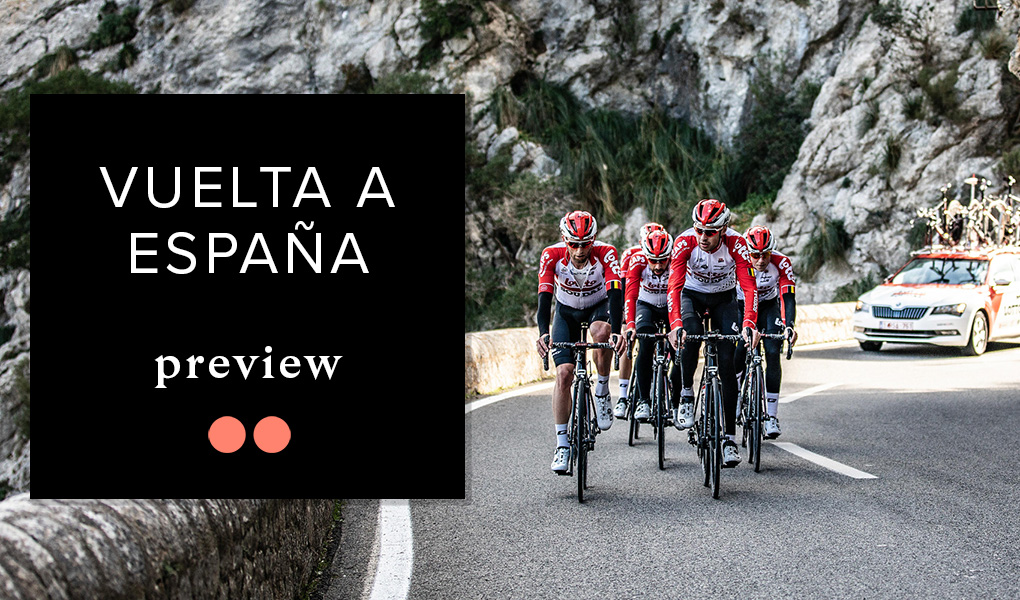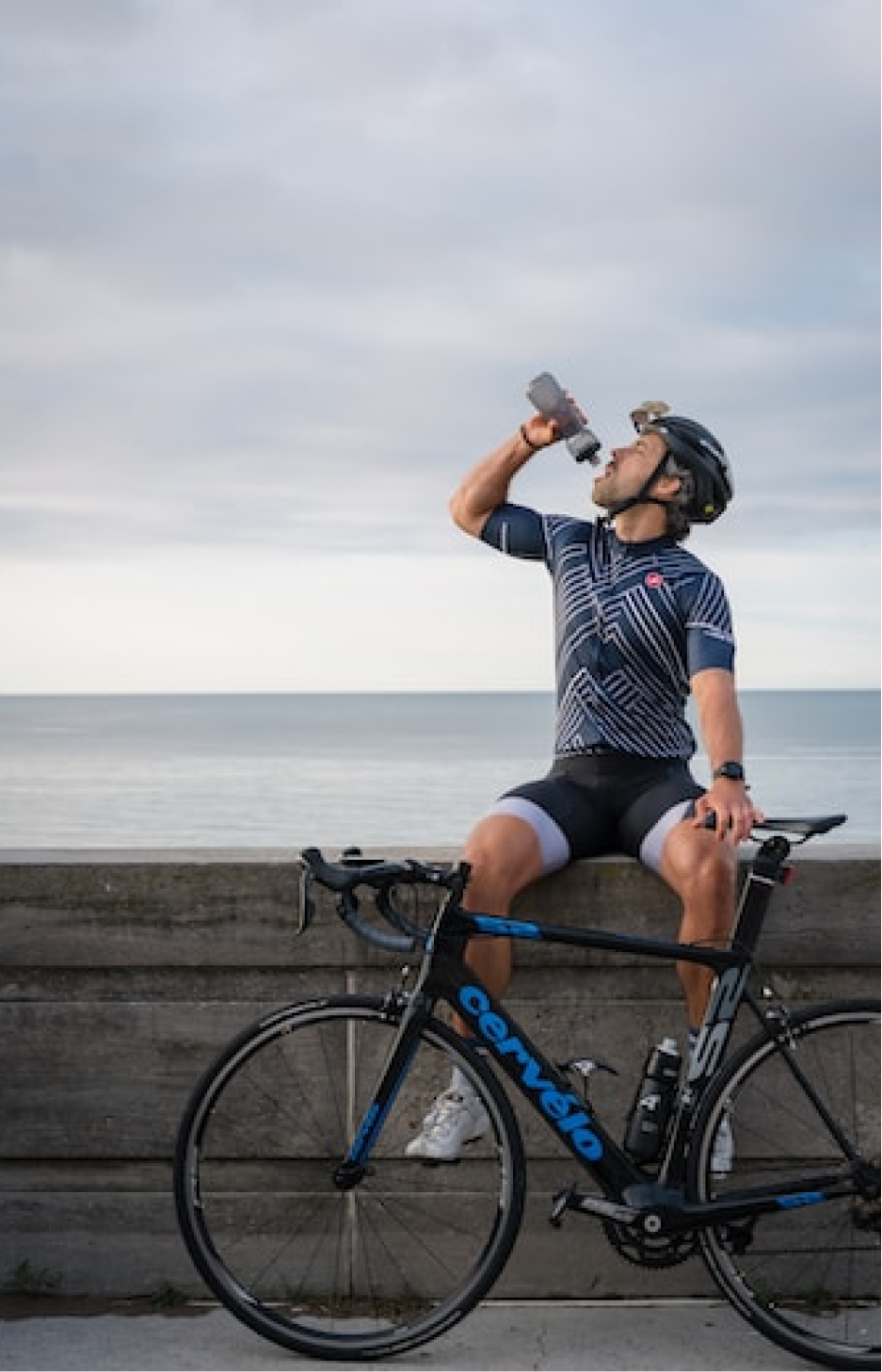Back for its 75th edition in the summer of 2020 the Vuelta is set to bring thrilling racing to screens around the world. Placed at the end of the season, part of the Vuelta’s charm is its unpredictability. Who will make it to the start line? Who will focus on the Tour or on the […]
Back for its 75th edition in the summer of 2020 the Vuelta is set to bring thrilling racing to screens around the world. Placed at the end of the season, part of the Vuelta’s charm is its unpredictability. Who will make it to the start line? Who will focus on the Tour or on the Olympics instead? The Vuelta is truly the racers-race, with less pressure on teams to perform as in the Tour de France & more opportunities for the underdog to shine.
The 2020 Vuelta a España
The third & final Grand Tour on the racing calendar, the Vuelta a España is certain to produce fireworks on yet another explosive course. The 2020 route is an international affair with the race departing from the Netherlands before side-stepping into France (with a summit finish on the mythical Col du Tourmalet) & Portugal (for the first time since 1997) en route.
The tour departs on the 14th August in the Dutch city of Utrecht with the opening team time-trial. After 3,245 km & 21 stages of grueling racing, the race finishes in Madrid on the 6th September.
The 75th edition of the Vuelta includes seven steep climbs (one fewer than last year), as well as 11 stages that feature medium to high mountains in Spain and France.
A Brief History of the Vuelta
The race was first organized in 1935. 50 entrants faced a 3,411 km course in only 14 stages – a crazy average of over 240 km per stage. The race was inspired by the success of the Tours in France & Italy & was promoted by Juan Pujol of the daily Informaciones newspaper in a bid to increase its circulation. The race was suspended during the Spanish Civil War & World War II, but has since been held annually since 1955. As the Vuelta gained prestige and popularity the race was lengthened and its reach began to extend all around the globe.
In 1999 the course went up the Alto de L’Angliru in Asturias. Featuring an ungodly section of 23.6% (the Cueña les Cabres), the climb fast built a mythical reputation and secured its place in cycling legend as one of the steepest climbs in Europe: Over just 13 km the road shoots up 1,500 m. Credit for the discovery of this climb and its addition to the Vuelta goes to Miguel Prieto.
Spaniards have historically dominated the podium of the Vuelta, with Spanish nationals winning 30 out of the 66 editions of the race. Roberto Heras is particularly rampant, with wins in 2000, 2003, 2004 & 2005. France, Belgium, Switzerland, Italy, Germany, the Netherlands, Colombia, Ireland, Russia, Kazakhstan, the United States and Great Britain have also had first-place finishers.
Riders to Watch – 2020 Vuelta a España
Fast forward to 2020 & Slovenia’s Primoz Roglic is the defending champion. The 21-year-old Tadej Pogacar, also of Slovenia, will be a focus of attention after winning three stages, the white jersey and finishing third overall on his breakout Vuelta last September.
Runner up veteran Spaniard Alejandro Valverde is likely to race the Tour de France and the Olympics in July before retiring.
2020 Vuelta a España – 5 Key Stages
Stage 4: First summit finish at the Sanctuary of Arrate
Stage 4 brings the first mountains to the peloton. The final 25 kms feature the succession of the Karabieta Mountain Pass (2nd category) and the Alto de Arrate (2nd category). Two climbs that, though not excessively difficult, will start to mark the first differences in the general classification.
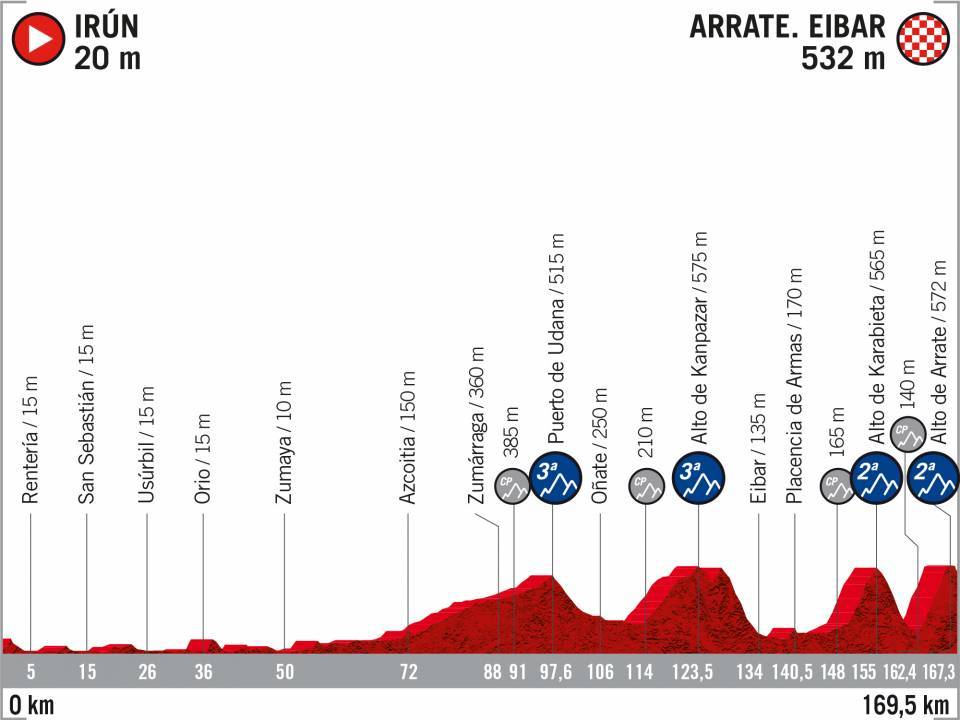
Stage 9: Summit Finish on the Tourmalet
A high-mountain stage with constant climbs, descents & very little time to rest. Three important French mountain passes star in this stage: the Col du Portalet (1st category), the Col de l’Aubisque (HC) and the Col du Tourmalet (HC), where riders will fight for a prestigious victory and the GC contenders will have their first out & out battle for red.
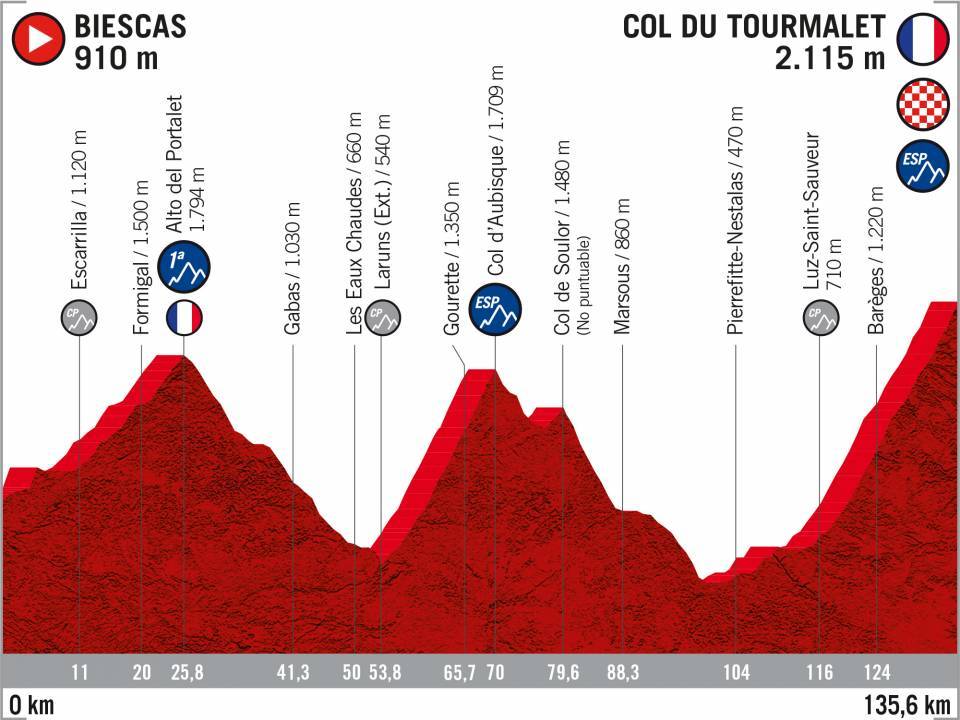
Stage 11: The Alto de Moncalvillo
The first, primarily flat, part will take place among the Logroño vineyards. The climb of the La Rasa mountain pass (2nd category) will wear the riders down, but the unprecedented finale will be decided in the Alto de Moncalvillo, an impressive, demanding mountain pass that is much harder than it looks: extensive, with inclinations between 8-9% and three final kilometres between 13-14%. At this point in La Vuelta any time lost could be crucial in the general classification.
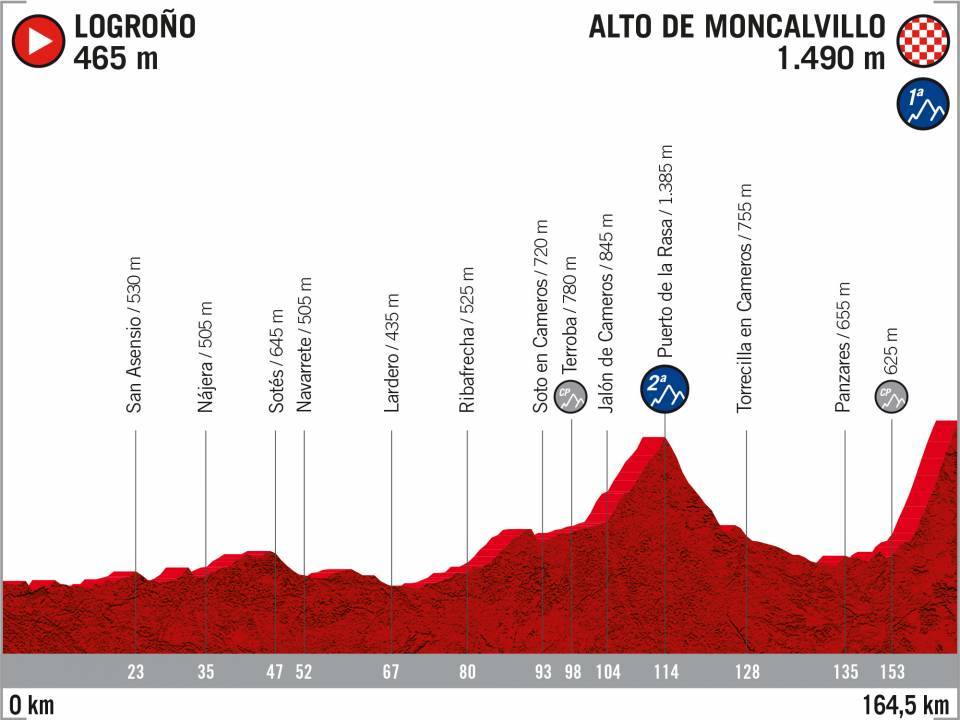
Stage 15: Summit finish on El Angliru
A short but exceptionally hard stage with a brutal final section connecting La Mozqueta, El Cordal and L’Angliru. Until then, the leaders will try to control their rhythm and their strength. The Asturian colossus will, again, be the judge of La Vuelta, sentencing those who have a bad day and crowning those who continue to fight for the ultimate victory.
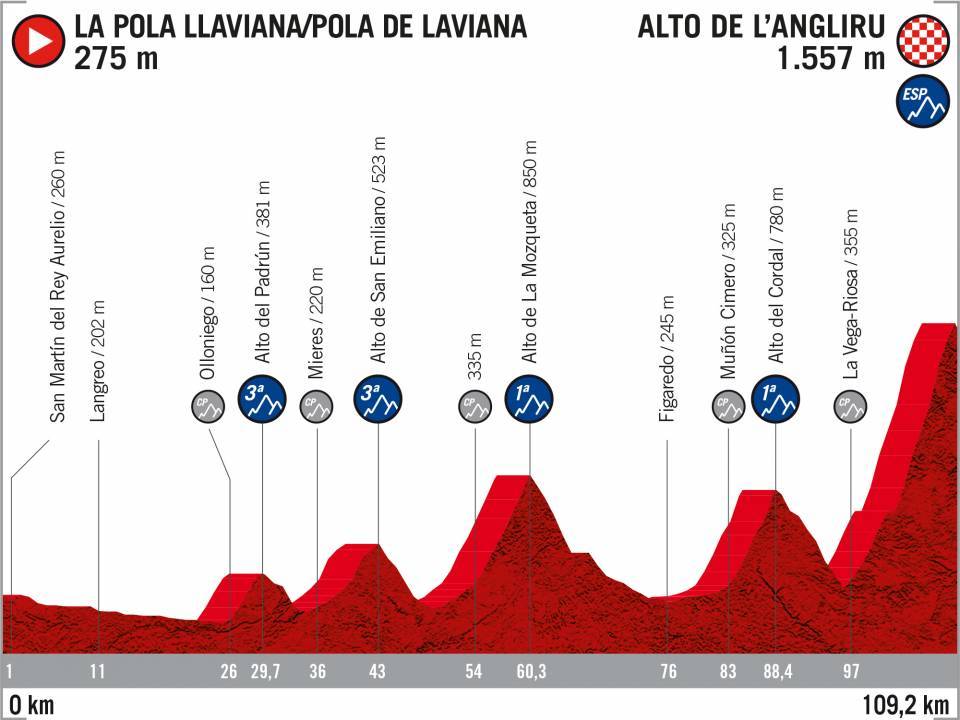
Stage 20: Final summit finish on La Covatilla
The peloton will ride through winding terrain to the Portillo de las Batuecas (1st category) that will enable a breakaway to take place. The unprecedented climb of La Garganta (2nd category), will precede the finale in La Covatilla, a HC mountain pass where leaders will use every inch of their strength in order to win La Vuelta.
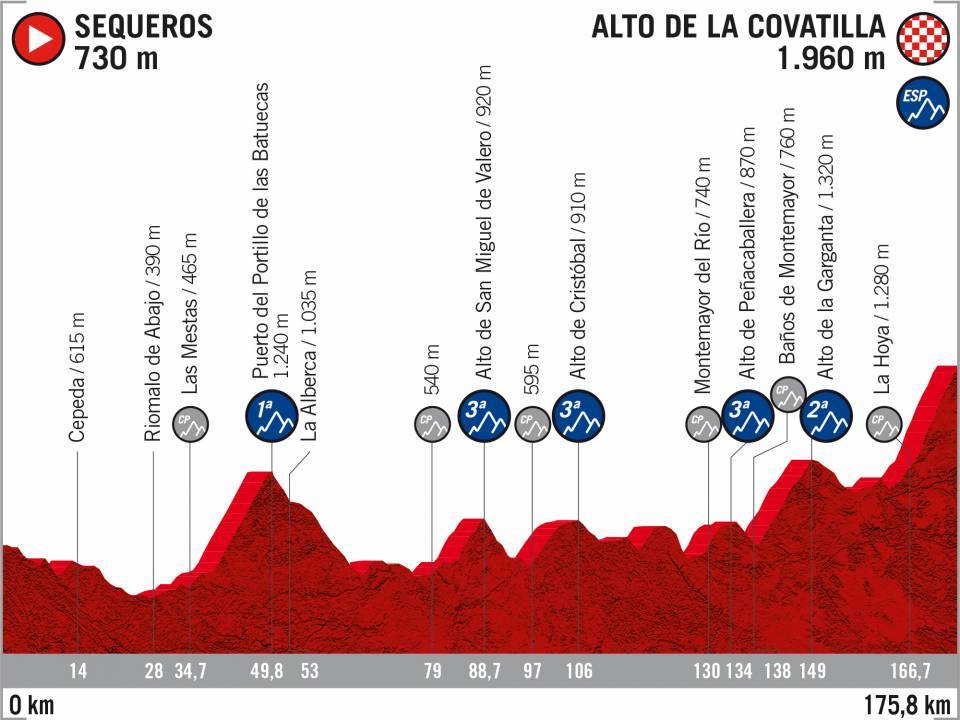
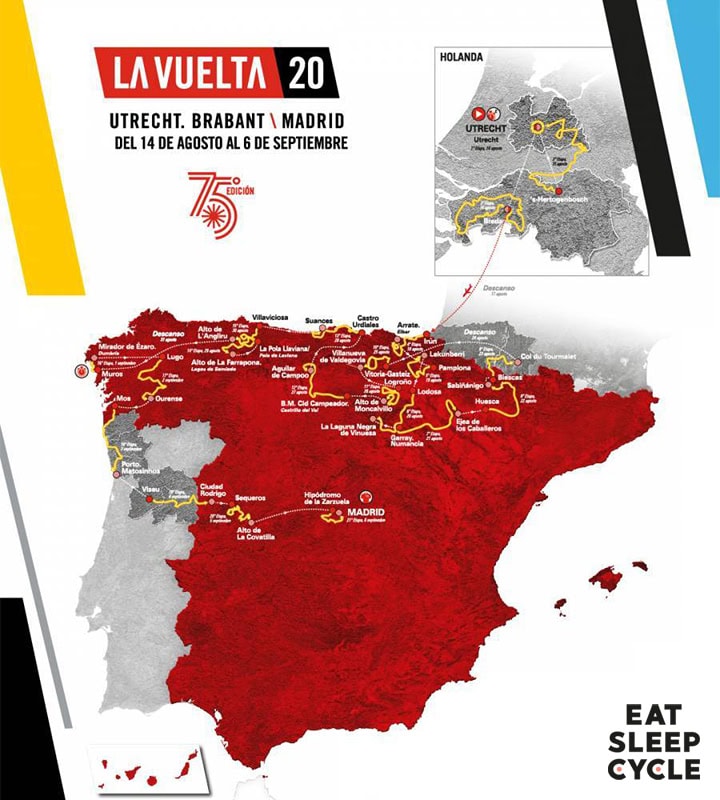
Try Your Own La Vuelta Cycle Tour
Inspired to ride the roads of La Vuelta? Check out our Vuelta España itineraries & witness this spectacular race first hand. Climb the key climbs, enjoy the best to the local region and follow in the pedal strokes of the pros! Give us a call now on +34 972 754 301 or contact us online!
P.S. Enjoyed this blog? Why not sign up to receive notifications every time we post and get regular updates on our latest tours!

